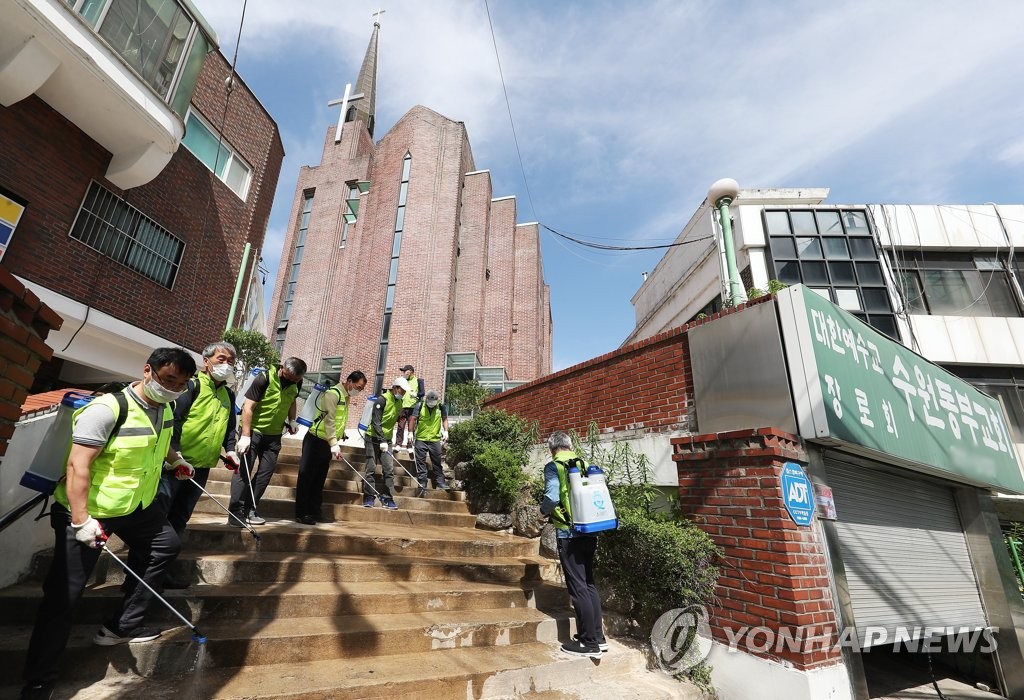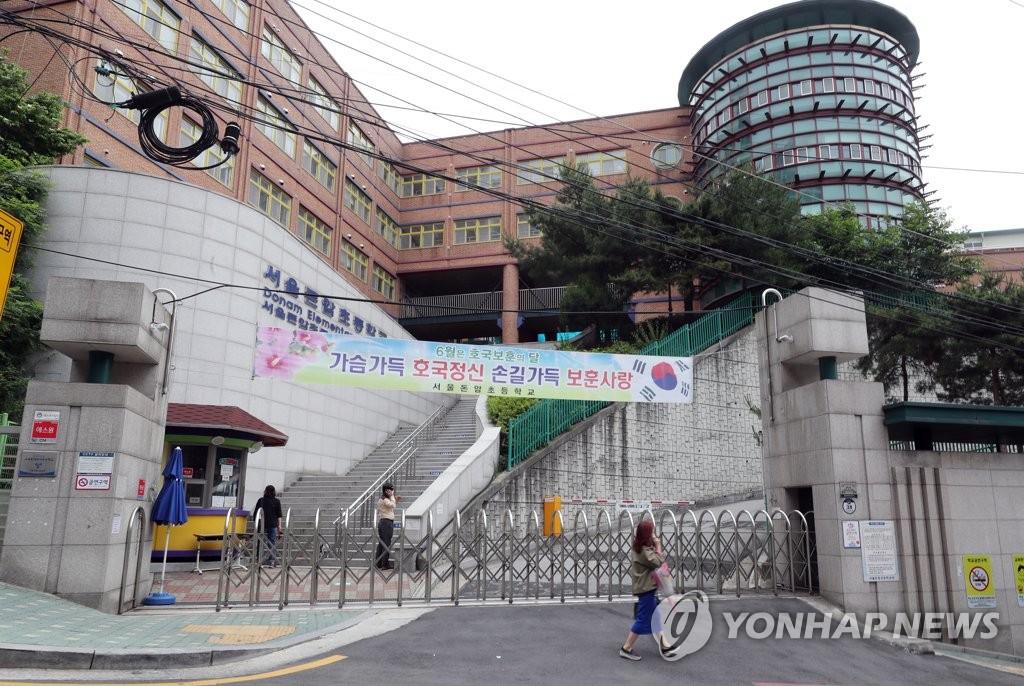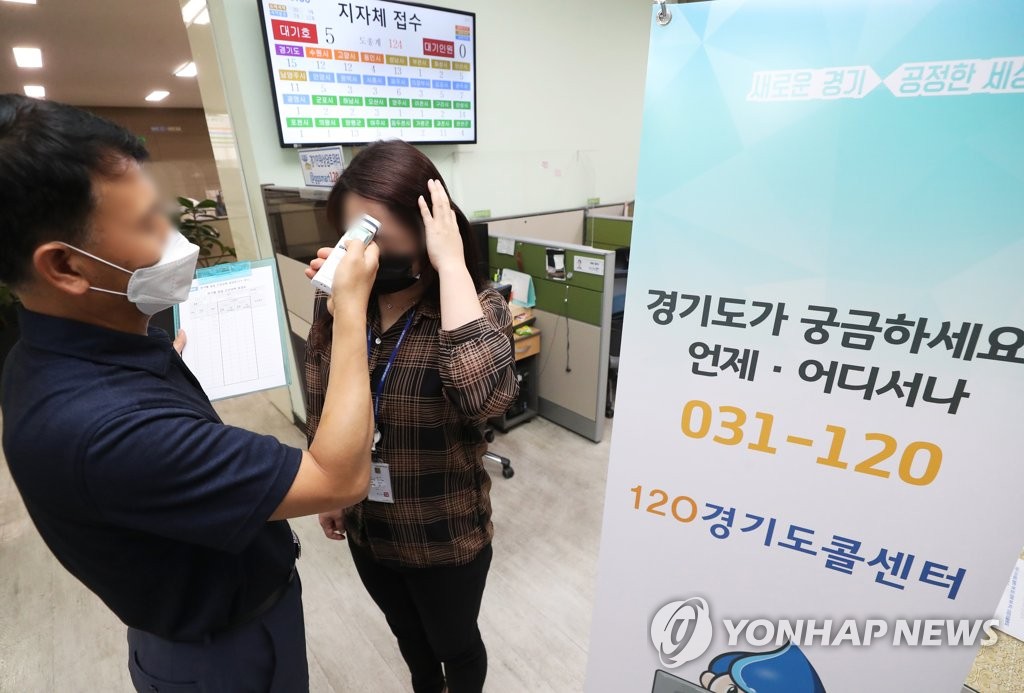- California Assembly OKs highest minimum wage in nation
- S. Korea unveils first graphic cigarette warnings
- US joins with South Korea, Japan in bid to deter North Korea
- LPGA golfer Chun In-gee finally back in action
- S. Korea won’t be top seed in final World Cup qualification round
- US men’s soccer misses 2nd straight Olympics
- US back on track in qualifying with 4-0 win over Guatemala
- High-intensity workout injuries spawn cottage industry
- CDC expands range of Zika mosquitoes into parts of Northeast
- Who knew? ‘The Walking Dead’ is helping families connect
Church-tied virus cases on steady rise ahead of further school reopenings
South Korea’s virus fight hit another snag Tuesday as church-linked cluster infections in the Seoul metropolitan area continued to rise ahead of further school reopenings, a key feature of eased social distancing.
The country identified 38 more cases of the new coronavirus, including 36 local infections, raising the total caseload to 11,541, according to the Korea Centers for Disease Control and Prevention (KCDC).
All of the new domestic cases were reported in Seoul and Incheon, west of the capital, and Gyeonggi Province that surrounds Seoul.



Quarantine officials disinfect areas outside a church in Suwon, south of Seoul, on June 1, 2020, as church-linked virus cases were reported. (Yonhap)
A string of virus cases traced to churches in Seoul and the surrounding metropolitan area have emerged as a new source of concerns as the country is still wrestling with cases tied to nightclubs and a distribution center in the greater Seoul area.
But the daily number of new infections appears to be on a downward trend after it hit a nearly two-month high of 75 on Thursday amid spiking cases tied to the logistics center west of Seoul.
As of noon, the number of cases tied to 23 small churches in Incheon and Gyeonggi Province reached 45, up 22 over the past 24 hours, according to the KCDC.
The agency said 71 percent of 24 virus patients tied to the churches showed no symptoms, indicating that those who have come in contact with them could be unwittingly infected.
An epidemiological study showed worshipers held gatherings without fully complying with hygiene measures.
“We call on people not to have face-to-face (religious) meetings in Seoul’s metropolitan area until infection risks fall,” KCDC Deputy Director Kwon Joon-wook said in a briefing.
Health authorities remain skittish about the possibility that sporadic church-traced cases could lead to a potential new wave of mass infections in the densely populated area.
In February, the country saw a sharp rise in virus cases tied to church services of a minor sect in the southeastern city of Daegu, once the epicenter of the COVID-19 outbreak here.
Health authorities warned that potential mass infections could occur in the greater Seoul area if sporadic cluster infections continue to break out.
“Large-scale infections are feared to come in the Seoul metropolitan area, but we can succeed in containing the virus spread when citizens raise their guards against the pandemic to break the chain of virus transmissions,” Sohn Young-rae, a senior health official, said in a briefing.
South Korea has seen a slowdown in cases linked to a distribution center run by e-commerce leader Coupang in Bucheon and Seoul’s nightlife area of Itaewon.
At least 117 cases have been linked to the distribution facility since the first patient was confirmed in late May.
The KCDC said at least 270 infections have been traced to the Itaewon outbreak.
Sporadic cluster infections are putting health authorities to the test as more students are set to return to schools.
Some 1.8 million students will go back to school Wednesday as part of the third phase of school reopenings after high school seniors became the first group to do so on May 20.
A total of 534 schools had suspended or delayed reopenings as of 10:00 a.m. Most of them are located in the greater Seoul area.
After 45 days of stricter social distancing, the country switched to the “everyday life quarantine” scheme in early May, enabling citizens to carry out social and economic activities under quarantine rules.
The country, meanwhile, added two imported cases and reported one additional death, raising the total death toll to 272. The fatality rate was 2.36 percent.
The total number of people released from quarantine after full recoveries stood at 10,446, up 24 from the previous day.
The country has carried out 939,851 tests since Jan. 3.











